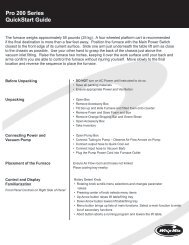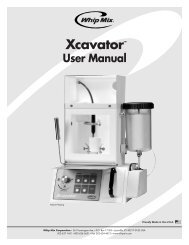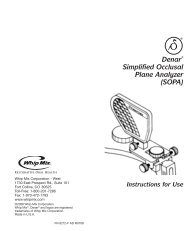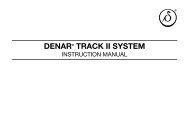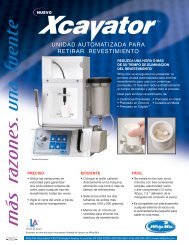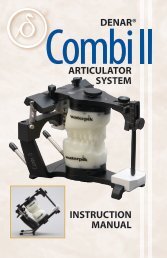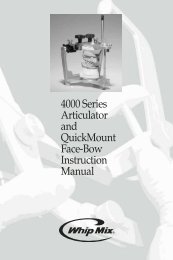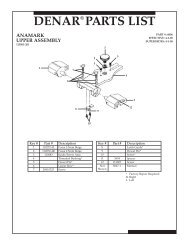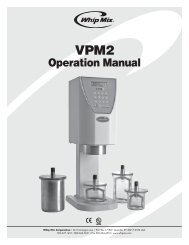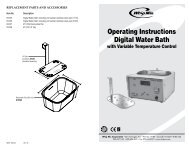The Hanau™ Spring-Bow Hanau™ Spring-Bow L'arc ... - Whip Mix
The Hanau™ Spring-Bow Hanau™ Spring-Bow L'arc ... - Whip Mix
The Hanau™ Spring-Bow Hanau™ Spring-Bow L'arc ... - Whip Mix
Create successful ePaper yourself
Turn your PDF publications into a flip-book with our unique Google optimized e-Paper software.
Do Not<br />
Distort<br />
Occlusal<br />
Surface<br />
An alternative to piercing the wax rim is to fabricate<br />
an occlusal index on the Bitefork.<br />
Figure 5 illustrates the Bitefork stem at the patient’s<br />
left, covered with a triple layer of hard baseplate wax<br />
or whatever your selection. Heat seal the periphery<br />
and soften throughout in a water bath. Seat and hand<br />
mold the wax around the rim and chill to assure<br />
removal and accurate replacement of the wax rim in<br />
its indexed bite.<br />
<strong>Bow</strong> PreParation<br />
1. Finger attach the Earpieces to <strong>Bow</strong> using the<br />
knurled Thumbnuts, Figure 6. No wrenches are<br />
necessary with the HANAU <strong>Spring</strong>-<strong>Bow</strong>.<br />
2. Note that the Thumbscrew is finger tightened to<br />
retain the Anterior Patient Reference in the nonhazardous<br />
position illustrated.<br />
2<br />
Parallel to<br />
Sagittal<br />
Wax Rim<br />
Pierced and<br />
Rigid<br />
Wax Covered<br />
Molded to<br />
Occlusal Plane<br />
Figure 4<br />
Stem at Left<br />
Figure 5<br />
Earpiece<br />
Thumbnut<br />
Anterior<br />
Patient<br />
Reference<br />
Thumbscrew<br />
<strong>Bow</strong><br />
Figure 6<br />
3. Insert the Transfer Rod into the <strong>Bow</strong> Socket, Figure<br />
7. Align the “flatted” side toward the front and<br />
insert to the Rubber Ring “stop.” Finger tighten<br />
the tapered Thumbscrew against the “flatted” side<br />
of the Transfer Rod.<br />
Note the position of Clamps, illustrated.<br />
4. Loosen the Thumbscrews at No. 3 and 2 on the<br />
Bitefork Clamp and then Thumbscrew No. 1 on<br />
the Transverse Clamp.<br />
A light application of petroleum jelly on the<br />
Transfer Rod and Transverse Rod will assist<br />
Clamp positioning during patient application.<br />
<strong>Bow</strong><br />
Transfer Rod<br />
<strong>Bow</strong> Socket<br />
Transverse Rod<br />
Transverse Clamp<br />
Thumbscrew No. 1<br />
Tapered Thumbscrew<br />
“Flatted” Side<br />
Rubber Ring<br />
Thumbscrew No. 2<br />
Thumbscrew No. 3<br />
Bitefork Clamp<br />
Figure 7<br />
Patient aPPlication<br />
5. Accurately seat the prepared Bitefork to the<br />
patient, perhaps placing two cotton rolls between<br />
the mandibular occlusal surface and the underside<br />
of the Bitefork, Figure 8. Apply a “touch” of<br />
petroleum jelly on the stem end of the Bitefork.





